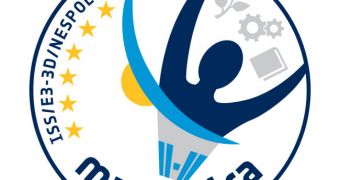Officials at the European Space Agency (ESA) announce that the name for the third European long-term mission to the International Space Station (ISS) is MagISStra.
The name, which was proposed by Antonella Pezzani of Italy, combines the Latin word for female teacher (magistra) with the initials of the international orbital facility.
The mission will begin on December 13, as Italian astronaut Paolo Nespoli (ESA) launches to the ISS alongside Russian cosmonaut Dmitri Kondratyev (RosCosmos) and American astronaut Catherine Coleman (NASA).
They will be carried to low-Earth orbit aboard an improved Soyuz TMA spacecraft, and will spent six months on the space lab. The three will be members of Expeditions 26 and 27.
Their return to Earth is currently scheduled for May 2011, which means that the astronauts will get to see the space shuttle Endeavor docking to the ISS for the last time, in February 2011.
During their stay, the station will also be visited by both European and Japanese unmanned cargo space capsules, the ATV Johannes Kepler, and the HTV spacecraft, respectively.
According to ESA, the competition to name Paolo's mission to space was launched in June, 2009. The final selection continues the space agency's tradition of having the letters ISS within the name of the mission.
An additional reason why this name was selected is because it reflects one of the three main dimensions of the astronaut's flight. The goals of MagISStra are science, technology and education.
“The mission logo features a human being, who can be seen as the Paolo himself, projected from the ISS,” ESA says in an official press release.
“The value of the mission to Earth is symbolized by three icons between the arms: the plant denoting scientific research, the gears for technology, and the book as knowledge,” the announcement reads.
The six stars on the insignia also hint at the six months that the ESA astronaut will spend in space, at the number of crew members on the ISS, and also at the European Union flag.
During his stay on the ISS, “Paolo will also film with ESA’s novel 3D camera to show the Space Station in a new way,” the space agency announces.
The main partners in the ISS are NASA, ESA, the Russian Federal Space Agency (RosCosmos), the Japanese Aerospace Exploration Agency (JAXA), and the Canadian Space Agency (CSA).

 14 DAY TRIAL //
14 DAY TRIAL //